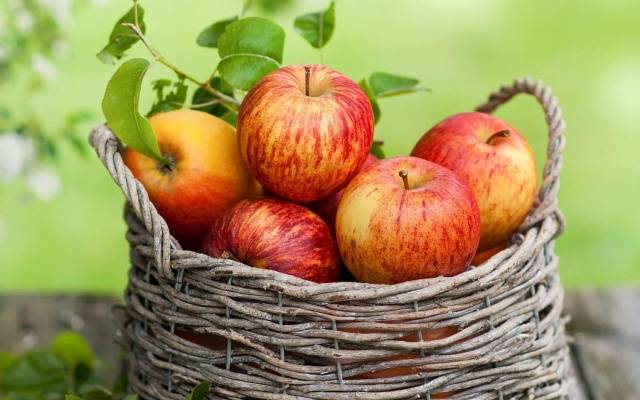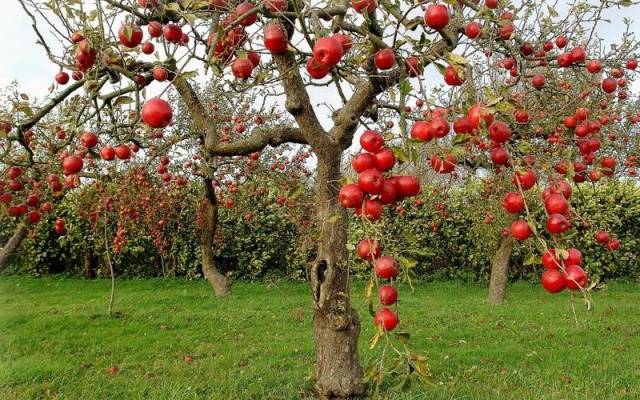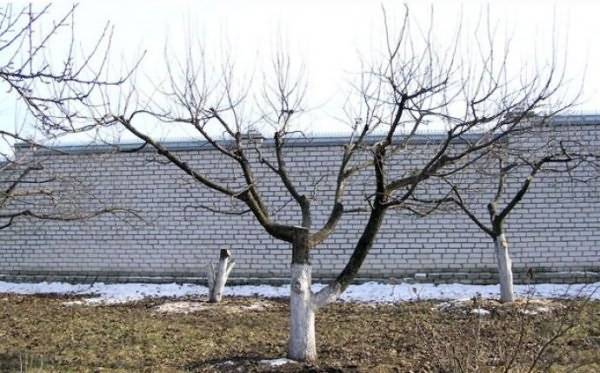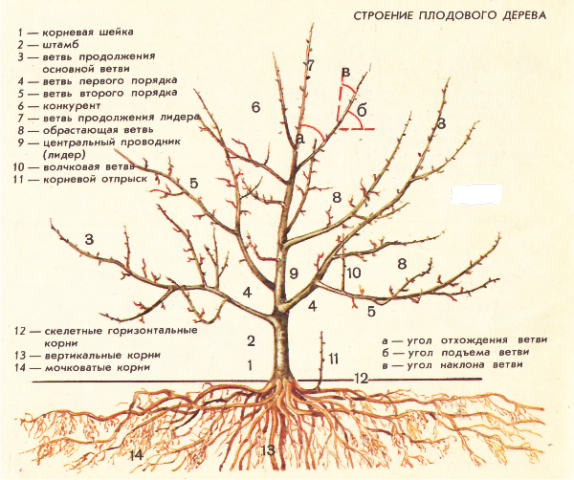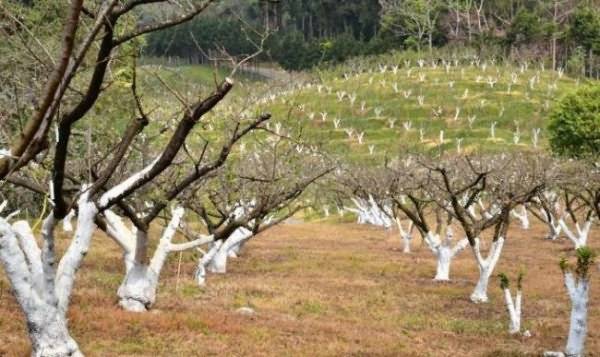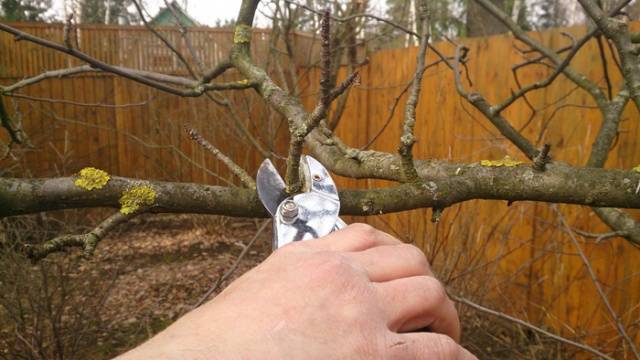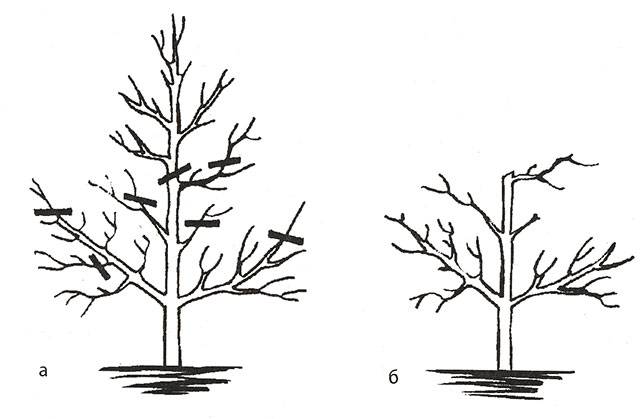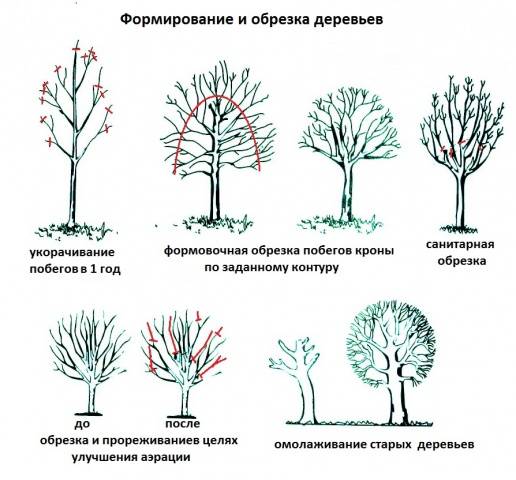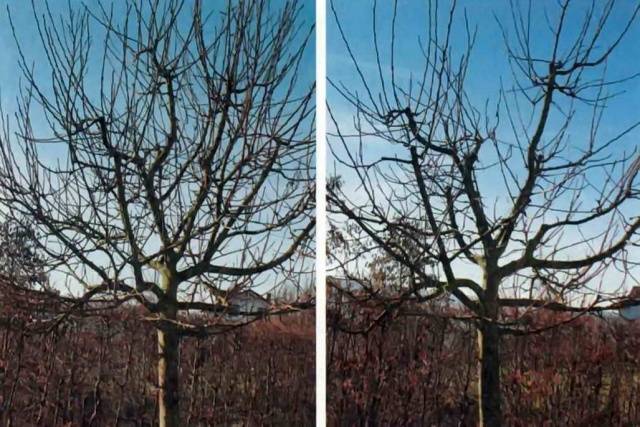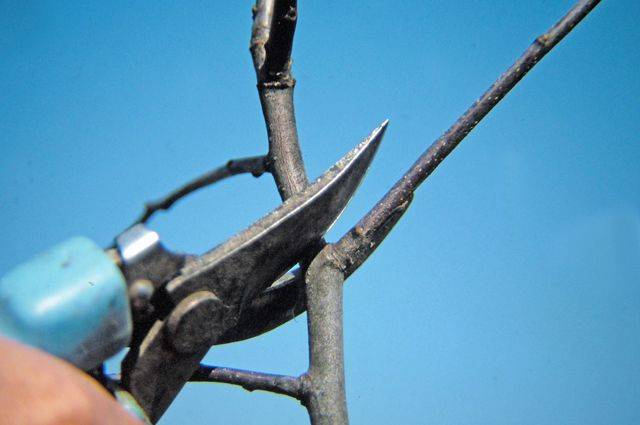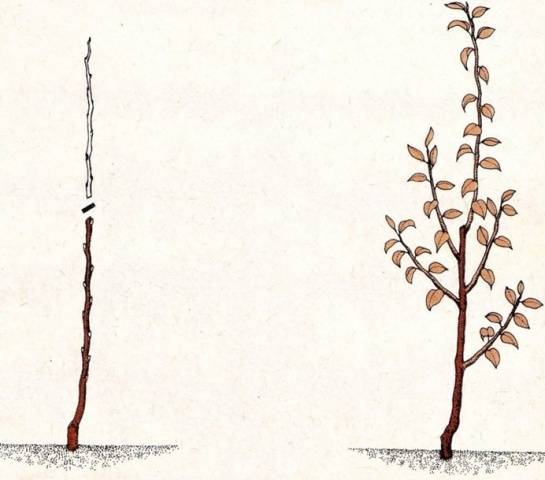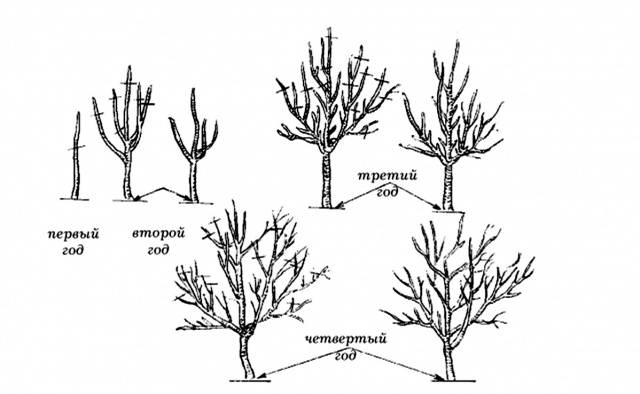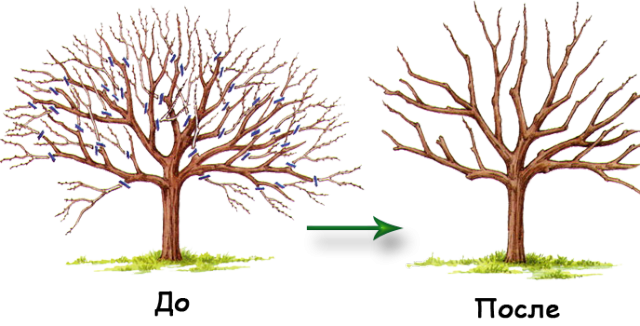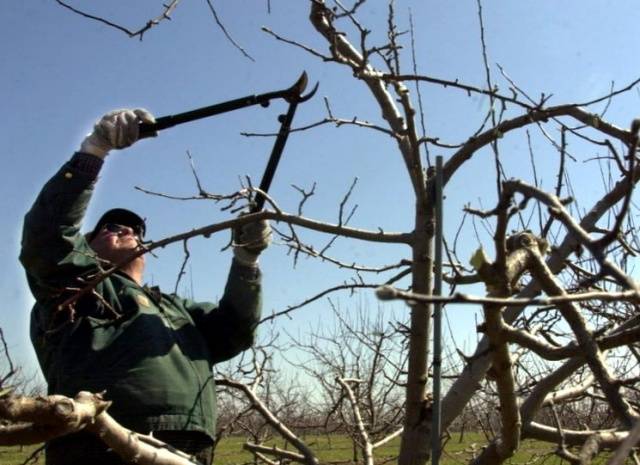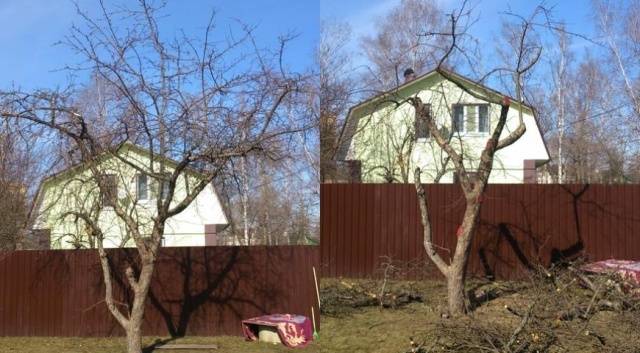Content
The apple tree is the main fruit crop in the countries of the former Soviet Union and occupies about 70% of the area of all orchards. Its widespread distribution is due to economic and biological characteristics. The apple tree is distinguished by its durability, there are many varieties that are well adapted for growing and fruiting in various climatic zones. Even in Siberia, it is cultivated in shale form. You can talk endlessly about the benefits of apples, their culinary properties.
But in order for the tree to bear fruit well from year to year, it needs to be looked after as expected. The list of necessary measures for the maintenance of apple orchards includes fertilizing, watering, indispensable moisture charging for the winter, complex treatments against pests and diseases, mandatory crown formation and pruning. For some reason, the latest events frighten inexperienced gardeners most of all. Today we will consider apple pruning autumn for beginners.
Why prune apple trees
It is not so rare to meet apple trees, which the owners "regret" and do not carry out pruning, and then are surprised that the harvest is bad. In the end, in order for a tree to bear fruit normally, large branches have to be removed, inflicting sensitive wounds on it. Pruning is a mandatory event, it is better to carry it out from the moment the apple tree is planted. Its purpose is:
- the formation of a crown of the correct shape;
- regulation of the height of the tree;
- strengthening the branches;
- regulation of fruiting;
- ensuring optimal crown lighting;
- improving the quality of fruits;
- removal of old, diseased, unproductive branches;
- facilitating tree care and harvesting;
- an increase in the life and fruiting of apple trees;
- rejuvenation of old trees;
- increased winter hardiness.
If you do not prune, the apple tree can bloom profusely every year, but the harvest will be poor or consist of a large number of small fruits. Without access to sunlight, they will not become sweet, and thickened branches will become a breeding ground for pests or diseases. The apple tree will spend all its strength on the development of useless shoots.
Our proposed scheme shows the structure of an adult tree.
When to prune apple trees
It is believed that fruit trees are best pruned in the spring, before sap begins to flow. For cherry, plum, apricot or other stone fruit, there is no other option. But pome trees - apple, pear, can be cut in the fall. This is even preferable, because spring, especially in the southern regions, can come suddenly, and you simply will not have enough time to remove branches.
In winter, fruit trees are pruned only by professionals in large gardens - they have no other choice due to the large amount of work. For beginners, it is better not even to undertake this. After the onset of frost, the bark around the cut site often flakes off, freezes and heals for a long time. Even cracking of wood is possible, especially after abundant fruiting or dry summers. It is easier to carry out all the necessary operations at a positive temperature.
You can prune apple trees in autumn in all regions. In hot or temperate climates, this is done after the leaves fall.In the northern regions, it is better to start pruning in September - early October, after harvesting, so that the tree has time to heal the wounds before the frost begins. It turns out that late varieties in cold climates will have to be courted in the spring.
Pruning apple trees
There are many ways to form the crown of apple trees, for example:
- sparse tiered;
- bladed;
- fusiform (spindlebusch);
- oblique palmette;
- horizontal (Hungarian) palmette;
- Taganrog boat.
In order not to frighten novice gardeners, we will tell you the principles that give an idea of how to prune and shape apple trees. This will allow you to grow a healthy, regularly fruitful tree and fill your hand. Pruning techniques will improve as skills are acquired.
Apple tree pruning methods
When pruning fruit trees, there are two main ways:
- shortening - cutting off part of the branches;
- thinning - their complete removal.
Any shortening activates growth and branching. With strong pruning, 3-4 strong young shoots usually grow. Weak causes the development of fewer short twigs. Thinning - brightens the crown, makes it possible to gain strength and normally bear fruit for existing shoots.
Apple pruning rate
In practice, there are three degrees of pruning of fruit trees:
- Strong when 50-60% of the annual growth is shortened by more than half the length. The remaining overgrowing branches are removed on the ring. Typically, after strong pruning, a large number of vertically directed fat shoots (tops) grow.
- With moderate pruning, 40-50% of young branches are shortened by a third or half of their length, the same amount is cut into a ring. The result will be the absence of tops, normal growth.
- Short pruning - shortening 20-30% of young branches by 1 / 5-1 / 4 of the length and completely removing a third of the growth. At the end of next year, the shoots will lengthen by only 5-10 cm.
Well-groomed adult apple trees that have received sufficient moisture during the growing season are pruned weakly or moderately. Trees that are already running require a large number of branches to be removed.
Types of apple pruning
There are the following types of apple pruning:
- Formative... It starts from the first years of the life of the apple tree and continues for several years. It aims to form skeletal branches (of the first order and leader) into a frame of the required shape.
- Regulating fruiting... Provides a balance between branch growth and yield.
- Sanitary... Provides removal of dry, diseased, broken shoots.
- Restorative... Restores the crown of a tree after severe frostbite or mechanical damage.
- Rejuvenating... Designed to prevent the cessation of growth or fruiting. In very old apple trees, it can resume vegetation.
In fact, annual pruning, which is often called maintenance pruning, combines all of the above methods. For young apple tree it is more formative, an old tree rejuvenates as much as possible, and in an adult it regulates fruiting.
Required tools
In order to prune apple trees, you will need:
- ratchet pruner - for pruning branches thicker than 2 cm in diameter;
- regular pruning shears - for trimming thin shoots;
- secateurs on long handles - for cutting high-lying branches;
- garden saw - for cutting thick branches that cannot be cut with pruners;
- garden knife - for stripping wood or bark.
Sections not exceeding 1 cm in diameter are usually not treated with anything. The wound surface of a large area is covered with a mixture of mullein and clay or oil paint. If you removed a thick skeletal branch from a tree, it will have to be processed in the spring and fall until it is overgrown.
Apple tree pruning technique
Depending on the thickness of the branch and the purpose of its removal or shortening, pruning is distinguished into a bud, ring, side branch.Let's take a closer look at them.
Pruning an apple tree for a bud
To give the shoot the desired direction of growth, it is shortened by a bud, which must necessarily be located on the outside of the branch. The cut should be made at a 45 degree angle. It should not be located too close to the bud so as not to damage it, but the stump left should not be longer than 1 cm.
Cutting an apple tree into a ring
A ring is called a tree ridge at the base of a thick branch. To remove it, a cut is made along the outer edge. Over time, it will be tightened by the bark, and we will not cause much damage to the tree. If you make a cut close to the trunk, touching the ring, the wound surface will grow poorly, perhaps a hollow or a shell will form there. This will not benefit the apple tree, as well as the left stump, from which the bark will flake off, and the wood will rot.
Before removing a thick branch, be sure to make a small cut in the bottom of the ring before sawing completely. Thus, it will not collapse under its own weight, breaking off the bark and injuring the trunk. Peel the cut with a garden knife to make the sag faster, treat the wound surface with oil paint or a mixture of mullein and clay.
Watch a video on how to remove thick apple tree branches in detail:
Cutting an apple tree to a side branch
If two branches grow from one place, that is, they form a fork, and one of them needs to be removed, they are pruned to a side branch (for translation). Depending on the thickness, a pruner or a saw is used, the wound surface with a diameter of more than 1 cm is treated.
How to prune an apple tree
A young, freshly planted apple tree is pruned differently than an adult fruiting or old one. We will look at how to perform this operation in the fall for beginners, depending on the age of the tree.
Pruning an apple tree when planting
Shorten the apple tree to a height of 90 cm, and the side branches (if any) by 2/3. Remove all shoots below 40 cm completely. This is done in order to subsequently form an apple tree, which will be easy to care for. As it grows, the bole will stretch out, and the lower branches will be just at such a height that it is convenient to walk or harvest.
Pruning a 3-5 year old apple tree
After the tree takes root well and spends 2-3 years on your site, you need to start forming the crown. Keep in mind that the branches directed vertically upward will yield almost no crops. Most of the fruits ripen on shoots located almost parallel to the ground level.
Leave 3-4 of the strongest branches as skeletal branches, growing horizontally and looking in different directions. Cut the rest of the shoots into a ring. If you have already formed the second tier, do the same. Now cut 1/3 of the skeletal branches to the outer bud.
Pruning a fruiting apple tree
Cut off any broken, dry, or diseased branches first. Then remove the tops - shoots going vertically upward, they still will not bear fruit. Now take a close look at the tree and cut out the weak branches that cross into the crown. Shorten the remaining shoots. The apple tree should be well lit and ventilated, only then will it give a good harvest.
Pruning an old apple tree
Old fruiting apple trees are pruned as described above. The difference is that the time has come to change unpromising, that is, skeletal branches that have practically stopped yielding. They are removed in turn, but not on the ring, but leaving a small stump cut at an angle of 45 degrees.
The grown tops are removed, leaving the best 1-2. With the help of twine, they are gradually bent, transferring to a horizontal plane, and new skeletal branches are formed by pruning.
Sometimes an old apple tree grows on our site, which practically does not bear fruit, but it is a pity to lose the variety, and the place is successful.You can cut the entire trunk of the tree at an angle of 45 degrees, and form a new crown from the branches that have grown around.
The video for beginner gardeners that we have proposed for viewing will help you make the right crop and avoid many mistakes:
Conclusion
Of course, pruning apple trees is not the easiest operation. But in order to get a decent harvest, it is simply necessary.
